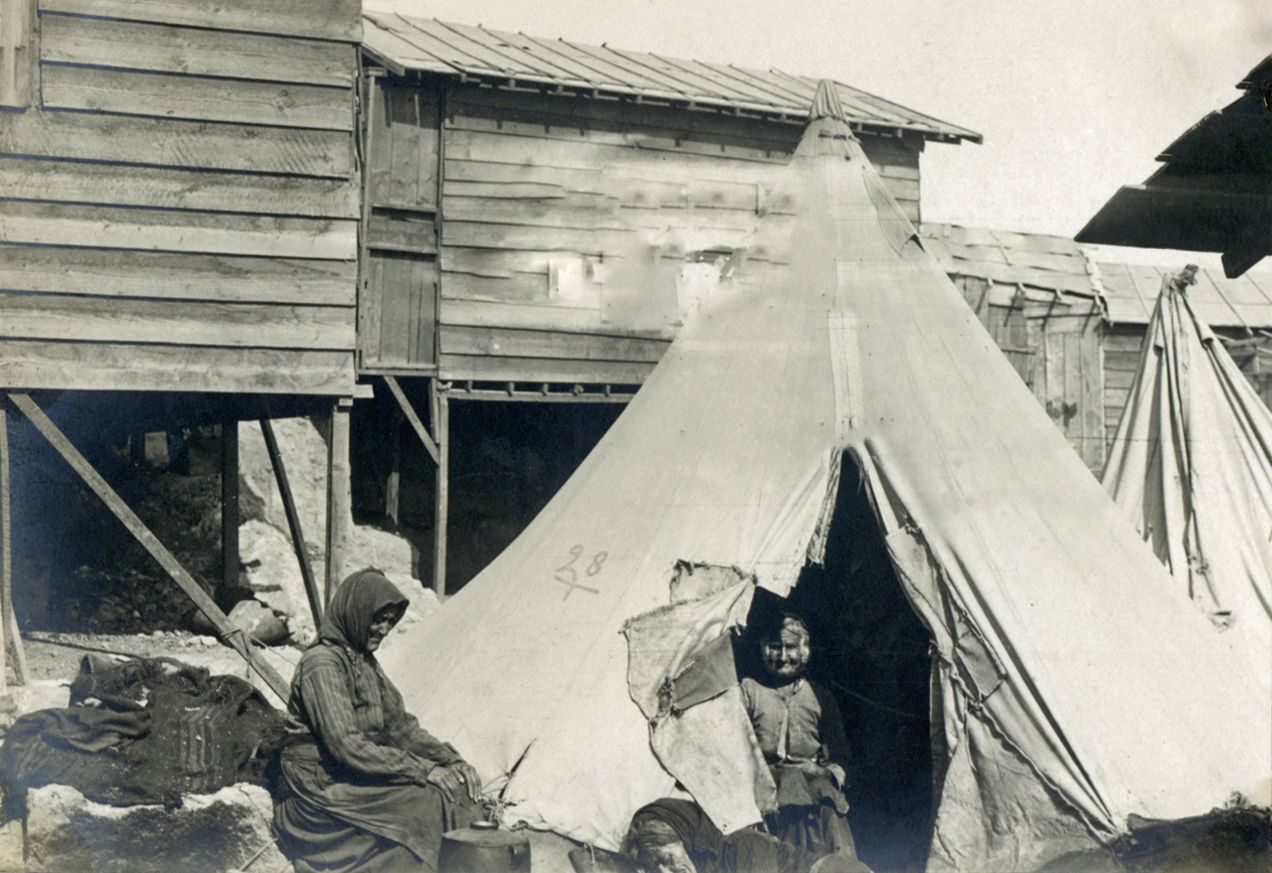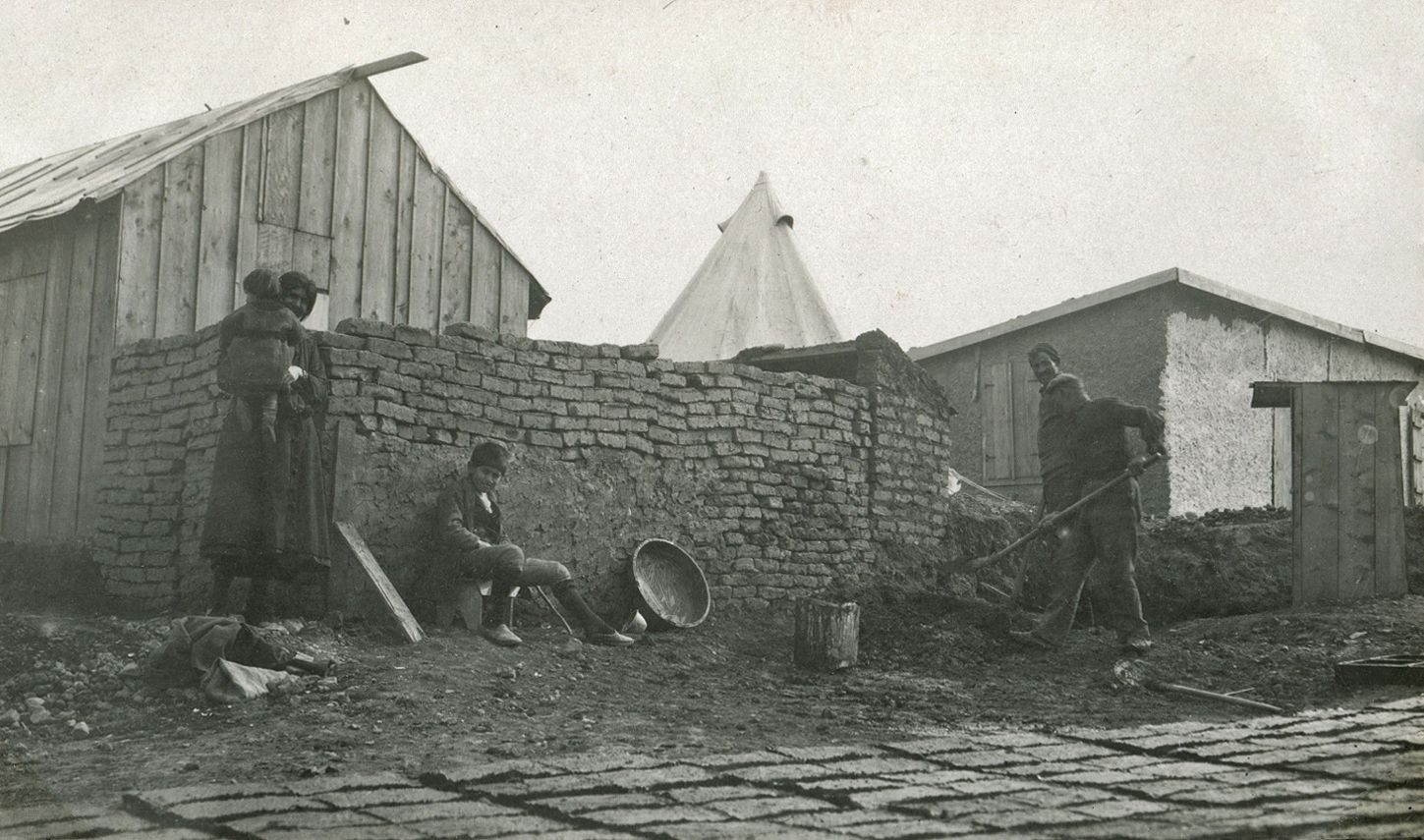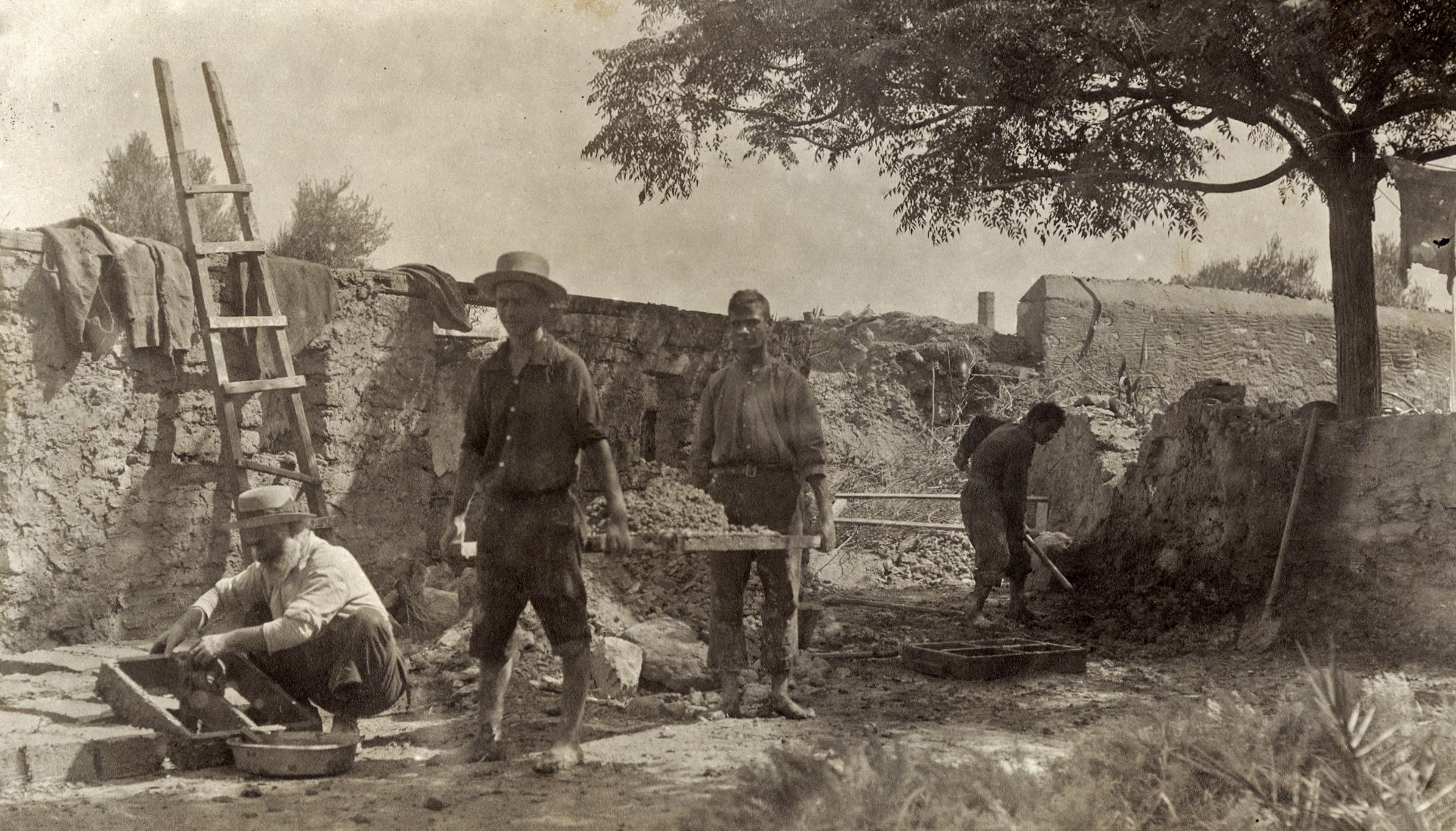Armenian refugees in Nikaia
More than 100,000 Armenians fled to Greece.
Most settled in Kokkinia, in certain areas of Piraeus. And when I say ‘settled’, I mean haphazardly, first in tents and on blankets on the ground, and then, gradually, they built dwellings with everything the land provided.
[...]
If there were stones, they used stones. If there was mud, they used mud. Sheets of tin, pieces of iron, they would use any materials they could get their hands on to build their houses.
[...]
Their hastily made houses, their hovels, were packed together.
[...]
They would make small rooms that served as both bedroom and kitchen. A five- or six-member family would share a room measuring two metres by three metres. They were so extremely poor that most houses had dirt floors and the women would weave carpets and the like and spread them down on the floor to stave off the cold. That’s how they slept.
[...]
In the morning, this single room would turn into a kitchen where the women cooked. Often, on rainy days, water would drip down the walls of these houses. However, these houses were also very clean. The people were very clean, beautiful smells would emanate from these neighbourhoods.’
(Extracts from an interview with Kouin Minasian for the television documentary series ‘The Haunts’, directed by Marina Danezi)
The banks of the Kanapitseri stream also provided refuge to Armenian refugees who created their own community in Nea Kokkinia. Kouin Minasian spoke of the settlement process of the Armenian refugees on the television documentary series ‘The Haunts’.
Establishing a church and a school were the first collective actions undertaken by the Armenian community. The initial makeshift constructions soon gave way to buildings made of stone. The refugees themselves donated money and offered their personal labour in order to establish the ‘Zavarian’ Refugee Association and School and construct the school building. They were supported in their efforts by the Armenian Blue Cross, a branch of the American Red Cross. In autumn 1927, the ‘Hripsimiantz’ Kindergarten and the ‘Zavarian’ Elementary School opened their doors. The kindergarten operated with the contribution of the kindergarten teacher Haiastan Ousaklian, while the elementary school boasted 6 teachers and 80 students under the direction of Zakar Zakarian. Since the 1928-1929 school year, the ‘Zavarian’ School has been housed in the same space where it can still be found today. To this day, the school, along with the Agios Iakovos church, constitute the centre of the Armenian community of Palaia [Old] and Nea [New] Kokkinia.
Keanous Afsaroglou served as a teacher in the Armenian school from 1946 until her retirement several decades later. Her life became inextricably linked with the life and the education of the Armenian children of Nikaia, earning Afsaroglou the status of an emblem for the Armenian community. Her memories and narratives constitute an invaluable testimony about an entire era.
The extracts of the interview with Kouin Minasian are reproduced courtesy of Marina Danezi and the television documentary series ‘The Haunts’. The video of Keanous Afsaroglou is reproduced courtesy of Giorgos Veranis. We extend our warmest thanks to both creators.
Objects



